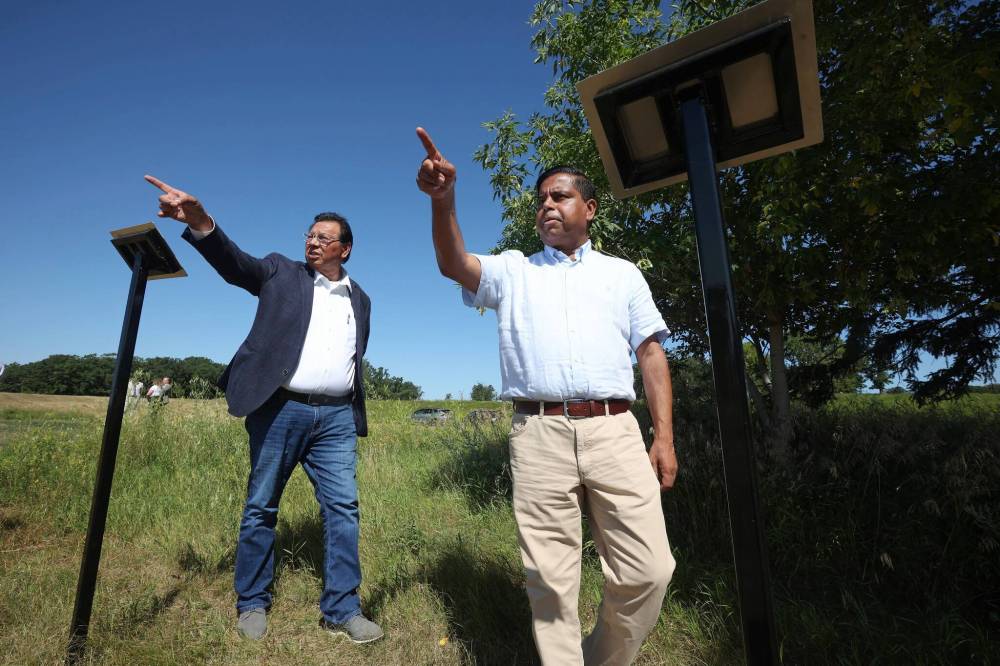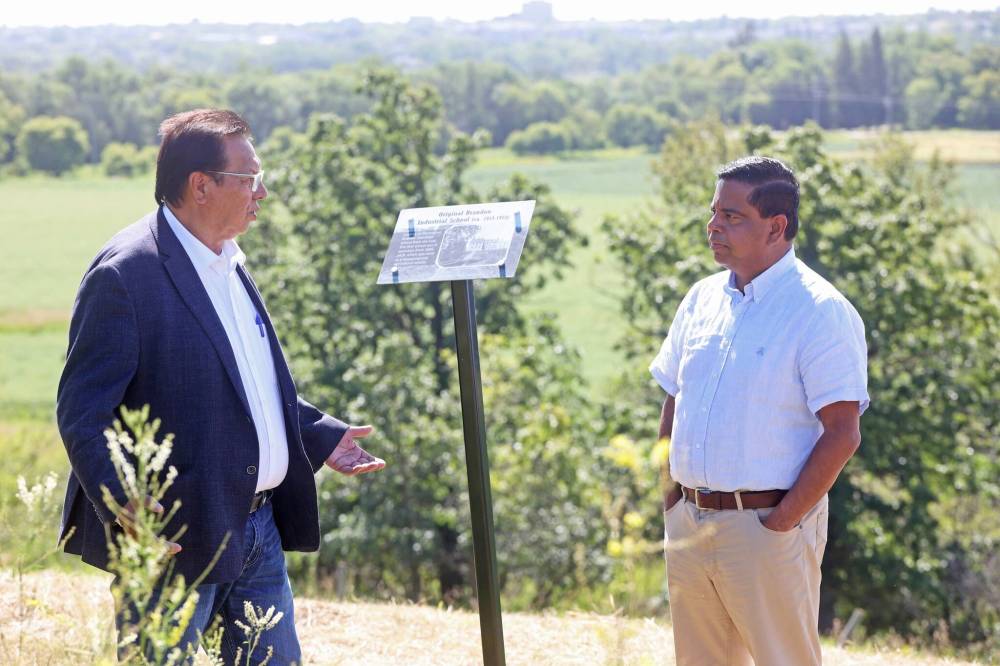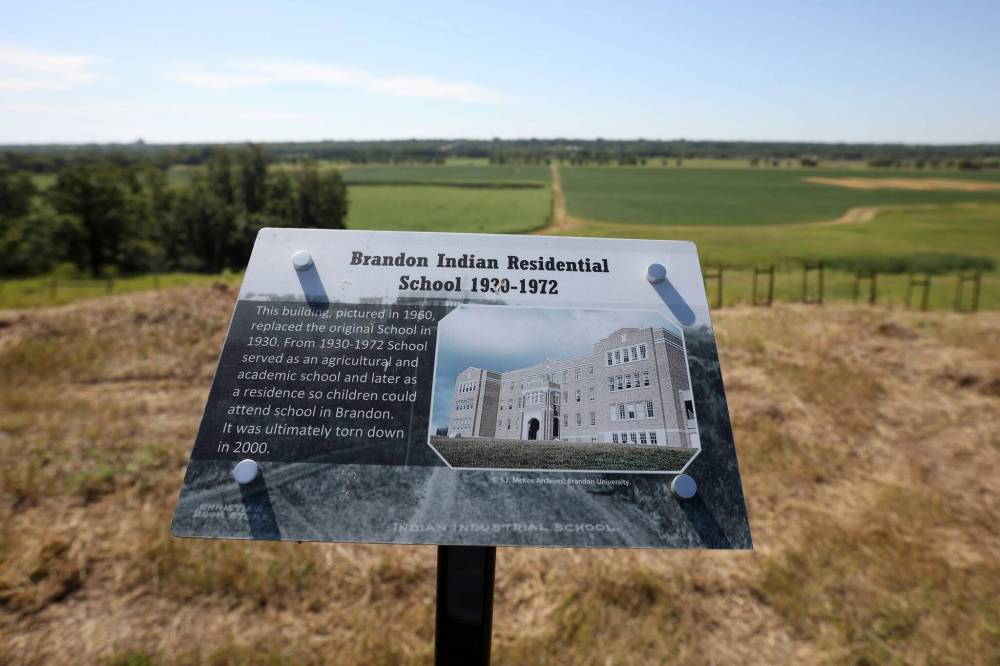Feds ‘reflecting’ on funding cap for grave searches
Advertisement
Read this article for free:
or
Already have an account? Log in here »
We need your support!
Local journalism needs your support!
As we navigate through unprecedented times, our journalists are working harder than ever to bring you the latest local updates to keep you safe and informed.
Now, more than ever, we need your support.
Starting at $15.99 plus taxes every four weeks you can access your Brandon Sun online and full access to all content as it appears on our website.
Subscribe Nowor call circulation directly at (204) 727-0527.
Your pledge helps to ensure we provide the news that matters most to your community!
To continue reading, please subscribe:
Add Brandon Sun access to your Free Press subscription for only an additional
$1 for the first 4 weeks*
*Your next subscription payment will increase by $1.00 and you will be charged $20.00 plus GST for four weeks. After four weeks, your payment will increase to $24.00 plus GST every four weeks.
Read unlimited articles for free today:
or
Already have an account? Log in here »
Hey there, time traveller!
This article was published 13/08/2024 (444 days ago), so information in it may no longer be current.
The federal government is “reflecting” on its recent decision to lower the funding cap for searches of former residential school sites, Crown-Indigenous Relations Minister Gary Anandasangaree said on a Monday visit to Westman.
Sioux Valley Dakota Nation Chief Vince Tacan took Anandasangaree on a tour of his community as well as the former Brandon Indian Residential School site located off Grand Valley Road.
It was reported last month that the funding cap for communities through the Residential Schools Missing Children Community Support Fund was being lowered from $3 million per year to $500,000.

Sioux Valley Dakota Nation Chief Vince Tacan (left) shows Crown-Indigenous Relations Minister Gary Anandasangaree around the site of the former Brandon Indian Residential School on Grand Valley Road on Monday. Anandasangaree was visiting Sioux Valley Dakota Nation as a followup to the federal government's recent apology to the nine Dakota and Lakota First Nations in Canada and their members. (Tim Smith/The Brandon Sun)
That move drew criticism from groups like the Assembly of Manitoba Chiefs, whose deputy grand chief Betsy Kennedy called it “disheartening but also disrespectful to the survivors and families affected by the residential school system.”
According to Sioux Valley’s website, the reduced funding cap also led to the cancellation of a four-day event scheduled next week to discuss the future of the community’s work at the residential school site.
During an interview at the former Brandon residential school site, Anandasangaree said the cap was instituted “because of the demand of many new communities who are starting this journey.”
He added: “I think we are reflecting on this and we will have more to say in the coming days.”
However, Anandasangaree said the funding cap reduction won’t impact Sioux Valley’s ongoing search efforts.
“We’re looking at the options and ultimately it’s going to come down to the wishes of Sioux Valley and to make sure that if there are unmarked graves, we’re able to work with them to support those searches,” Anandasangaree said. “We will have that conversation, I think, later on today.”
Anandasangaree said he always tries to visit former residential schools when visiting a community and thanked Tacan for taking him on a tour of the local site during his first trip to Brandon.
“Every time I go to a site, there is something that you do feel, and this is no different,” the minister said. “It also puts so much in context in terms of the loss, the harm, and the chief talked about the impact. But one of the silver linings is the resilience.”

Sioux Valley Dakota Nation Chief Vince Tacan talks with Crown-Indigenous Relations Minister Gary Anandasangaree at the site of the former Brandon Indian Residential School on Monday. (Tim Smith/The Brandon Sun)
The visit comes less than a month after Anandasangaree formally apologized on behalf of the federal government to nine Dakota and Lakota First Nations in Saskatchewan and Manitoba after they were treated as refugees and denied their constitutional rights following the Battle of Little Bighorn in 1876.
Tacan told the Sun that the minister’s visit continues discussions that started at last month’s apology and is a good indication that the federal government is a willing partner in tackling some of the difficult issues Sioux Valley faces.
“I think we’re at the point now where we could start doing some of the searches and start to actually dig a few locations that are highly probable that we’ll find something,” Tacan said of the residential school site.
“That’s important to our community, because we need to know what we have here on the site, because at some point we would like to develop the site.”
The chief said that he’s heard the site of the residential school described as the place where his community’s language, culture and family connections were broken down and taken away.
He said his preference would be for a healing facility to be built on the site to help restore what was taken away.
“But in order to do that, we have to know that the area is clean of any anomalies,” he said. “We want to make sure that we’re not building where we shouldn’t be.”
Other Manitoba First Nations included in last month’s apology included the Westman communities of Canupawakpa First Nation and Birdtail Sioux First Nation.

Informative placards tell the history of the Brandon Indian Residential School at the site of the former school along Grand Valley Road. (Tim Smith/The Brandon Sun)
Anandasangaree said he met with representatives from all of the Dakota and Lakota communities last month and has held meetings since then as well.
“I do want to visit as many communities as possible, not just the Dakota,” he said.
» cslark@brandonsun.com
» X: @ColinSlark
